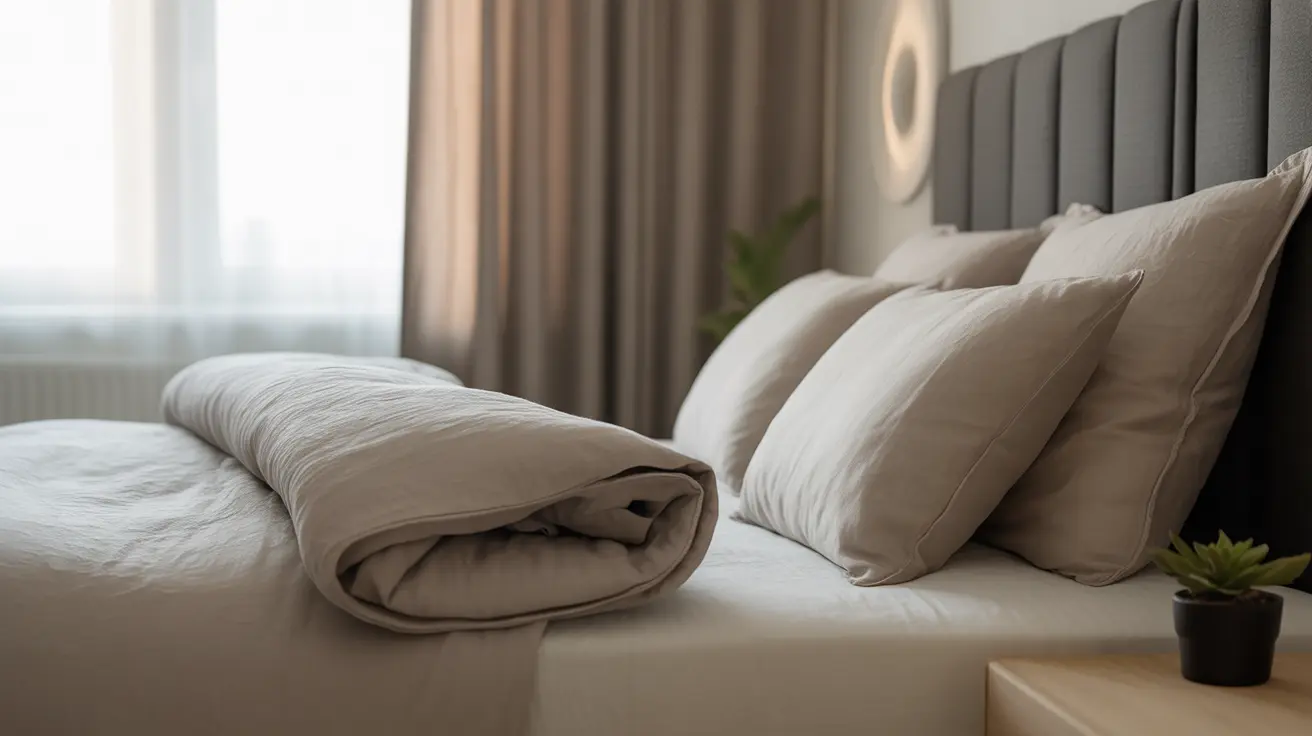Creating the perfect sleep environment is essential for getting quality rest night after night. By transforming your bedroom into a true sanctuary, you can significantly improve your sleep quality and wake up feeling refreshed. This comprehensive guide will help you optimize every aspect of your bedroom for better sleep.
Understanding how different environmental factors affect your sleep is the first step toward creating your ideal sleep sanctuary. From temperature control to lighting, bedding choices to air quality, each element plays a crucial role in promoting restful sleep.
Creating the Optimal Sleep Temperature
Temperature plays a vital role in regulating your sleep-wake cycle. The ideal bedroom temperature for sleeping typically falls between 60-67°F (15-19°C). This range helps facilitate your body's natural temperature drop during sleep, promoting deeper and more restorative rest.
To maintain optimal sleeping temperature:
- Use programmable thermostats to automatically adjust temperatures at bedtime
- Install ceiling fans for additional air circulation
- Consider seasonal bedding adjustments to maintain comfort
- Use breathable materials for sleepwear and bedding
Managing Light and Sound for Better Sleep
Controlling light and noise levels is crucial for creating a sleep-friendly environment. Exposure to light can disrupt your circadian rhythm, while unexpected sounds can prevent you from falling asleep or cause unwanted wake-ups.
Light Control Solutions
- Install blackout curtains or shades
- Use dim, warm lighting in the evening
- Remove or cover electronic devices with LED displays
- Consider using a sleep mask if needed
Sound Management Strategies
Create a quieter sleep environment by:
- Using white noise machines or fans
- Installing soundproof windows or heavy curtains
- Utilizing earplugs when necessary
- Positioning your bed away from noisy areas
Selecting the Right Bedding and Mattress
Your bed should be the most comfortable spot in your home. Investing in quality bedding and the right mattress can dramatically improve your sleep quality.
Mattress Selection
Choose a mattress that:
- Supports proper spine alignment
- Matches your preferred firmness level
- Accommodates your sleeping position
- Provides adequate motion isolation if sharing the bed
Bedding Materials
Select bedding that promotes comfort and temperature regulation:
- Cotton or bamboo sheets for breathability
- Season-appropriate blankets and duvets
- Supportive pillows designed for your sleep position
- Hypoallergenic materials if you have sensitivities
Improving Bedroom Air Quality
Good air quality is essential for healthy sleep. Poor air quality can lead to respiratory issues, allergies, and disrupted sleep patterns.
Enhance your bedroom's air quality by:
- Using air purifiers with HEPA filters
- Regularly cleaning and vacuuming
- Adding air-purifying plants
- Opening windows periodically for fresh air circulation
- Maintaining optimal humidity levels (30-50%)
Choosing Calming Colors and Décor
The visual environment of your bedroom can significantly impact your ability to relax and fall asleep. Choose colors and décor that promote tranquility and peace.
Color Selection
Opt for calming colors such as:
- Soft blues and greens
- Neutral tones
- Gentle earth tones
- Muted purples or grays
Décor Elements
Create a peaceful atmosphere with:
- Minimal clutter
- Natural materials and textures
- Soft, layered lighting
- Calming artwork or photographs
Frequently Asked Questions
What temperature should I set my bedroom to for the best sleep quality?
The ideal bedroom temperature for sleeping is between 60-67°F (15-19°C). This range supports your body's natural temperature decline during sleep and promotes better rest.
How can I reduce light and noise to create a more restful bedroom environment?
Install blackout curtains, use white noise machines, remove electronic devices with bright displays, and consider soundproofing solutions like heavy curtains or window treatments. Earplugs and sleep masks can provide additional help if needed.
What are the best bedding materials and mattress types to improve comfort and sleep?
Choose breathable materials like cotton or bamboo for bedding, and select a mattress that properly supports your body and sleeping position. Memory foam, hybrid, or traditional spring mattresses can all be good options depending on your specific needs and preferences.
How does air quality affect sleep, and what can I do to improve it in my bedroom?
Poor air quality can disrupt sleep and cause respiratory issues. Use air purifiers with HEPA filters, maintain proper humidity levels, regularly clean your bedroom, and ensure adequate ventilation to improve air quality.
What bedroom colors and decor styles promote relaxation and a calming atmosphere?
Soft blues, greens, and neutral tones are most conducive to sleep. Keep décor minimal and calming, incorporate natural materials, and reduce clutter. Use soft, layered lighting and choose peaceful artwork or photographs.




